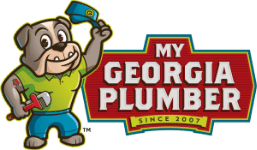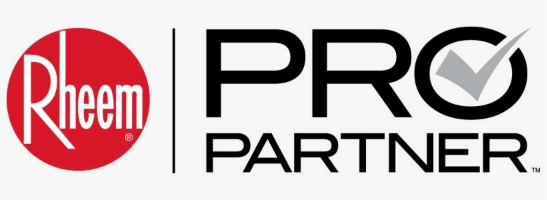
A summary of significant revisions approved during the International Code Council hearings.
During the last three years, there have been many code change proposals and two rounds of code hearings for the 2018 International Plumbing Code. The following is a summary of the significant code changes approved during the International Code Council hearings in Columbus, Ohio, and Richmond, Va. (Additions are underlined and deletions are struck through.)
These code changes will appear in the 2021 edition of the International Plumbing Code, which will soon be published and available for jurisdictions to consider for adoption. Because it is possible for modifications to be made during the final hearing process, I recommend you refer to the 2021 International Plumbing Code for the final version of any code changes.
Code Change: 2018 IBC, Public Restroom Privacy
In the International Building Code (IBC), Section 1209.3, a change was made to the building code requiring privacy and line-of-sight issues in public restrooms. Many public restrooms in airports, shopping malls and similar types of buildings do not have doors on the bathrooms; they simply have offset entryways.
The following code change was submitted by Gary Schenk and Lee Kranz of the Washington Association of Building Officials to address the issue of visually screening.
IBC 1209.3 Privacy.
Public restrooms shall be visually screened from outside entry or exit doorways to ensure user privacy within the restroom. This provision shall also apply where mirrors would compromise personal privacy. Privacy at water closets and urinals shall be provided in accordance with Sections 1209.3.1 and 1209.3.2.
Exception: Visual screening shall not be required for single-occupant toilet rooms with a lockable door.
Reason: “Although this section currently has provisions for sidewall or partition urinal privacy within the restrooms, it does not address privacy from viewing the user at the fixture from outside of the restroom. It also addresses the placement of mirror reflection from the outside.”
Ron George comment: I have seen this issue in my travels when walking through airports — many of the public restrooms have large mirrors located in the exit passageway on the wall, so that people coming and going from the public restroom can see people coming around the corner and to let people check their appearance on the way out of the restroom.
Often these large mirrors are placed there after the walls are constructed, and they inadvertently allow people walking by the restroom to see around the wall into the restroom and see people putting on make-up or brushing their teeth at the lavatories or using the urinals.
Code Change: 2021 IPC Chapter 2, Copper Alloy Definition
This change adds a new definition for copper alloy in IPC 2021, Chapter 2, Section 202.
COPPER ALLOY. A homogeneous mixture of not less than two metals where not less than 50 percent of the finished metal is copper.
Reason: “It is important to understand that copper tube is an almost pure copper alloy, composed of 99.9 percent copper (Cu + Ag) combined with no greater than 0.04 percent phosphorus (P). Whereas, a copper alloy is a mixture of at least two metals in which copper is the primary component comprising no less than 50 percent and is combined with other elements to create different copper alloys. Therefore, brass, bronze, red brass, etc. are all forms of copper alloy.”
RG comment: This code change proposal, along with several other similar code changes, was part of an overall effort by the copper industry to eliminate the word “brass” from the code. The term brass has always been used by the industry to address and allow mixture of mostly copper with other, less expensive filler metals for cast or forged valves and fittings.
The term brass has been used or misused by importers who have imported alloys with very low copper content; in some cases, less than 50 percent copper. Many of these low-copper-content “yellow brass” pipe fittings and valves typically include higher levels of zinc, magnesium, lead, aluminum and tin at percentages that cause the brass to look yellow compared to a red tint for higher-copper-content brass valves and fittings.
Typically, what was referred to as “red brass” consists of at least 85 percent copper. Yellow brass is typically described as a bright yellowish alloy of less than 85 percent copper and more than 15 percent zinc and other filler metals. Some industries recognize a lower percentage of copper content for yellow brass for hardware components that normally do not come into contact with water. The lower copper content of 67 percent can be considered red brass in hardware applications.
Yellow brass with the larger amount of filler metals will generally corrode or oxidize faster than higher-copper-content alloys. When yellow brass alloys in contact with water corrode, it is often referred to as “dezincification.” When these filler metals in the yellow brass alloy corrode, they typically leave a whitish green oxidation powder or coating on the exterior of the yellow brass valve or fitting, typically accompanied by a leak when the alloy is exposed to water.
The metals that are less noble than copper in an alloy will corrode or oxidize. When you look at it under a microscope, the remaining copper metal will look like a sponge or lava, as the less noble metals such as zinc, magnesium and aluminum corrode away, leaving the remaining metal product, which is now more brittle.
After enough time has passed to corrode and weaken the yellow brass alloy, cracking or failure of the fittings or valves is more likely when they are subjected to thrust forces or water hammer pressure spikes. The rate of corrosion will depend on the water quality and the percentage of filler metals in the copper alloy.
Cross-linked polyethylene (PEX) plastic piping systems are flexible plastic pipe systems that often utilize brass or copper alloy fittings. They offer little resistance to pipe thrust forces and movement. The continual movement of a yellow brass fitting weakened by dezincification can snap off, causing water damage.
Flexible piping systems are susceptible to joint failure associated with dezincification and thrust forces when yellow brass alloy fittings are used with higher filler metals. Using high-quality fittings can ensure long service life in PEX systems.
Strangely, with this new definition, both types of brass will now be called copper alloy. I’m not sure what the purpose of this definition was, except maybe to address some importers who were manufacturing fittings and valves with less than 50 percent copper. But is seems to allow importers to ship a copper alloy with 51 percent copper and call it a copper alloy, whereas in the past, it would be referred to as yellow brass.
One way to protect against this is to specify or purchase copper pipe and fittings. For valves, specify red brass with at least 85 percent copper.
PEX and other flexible plastic pipe systems that rely on metallic fittings experienced a rash of failures associated with yellow brass and dezincification. Many manufacturers and supply warehouses policed this issue, but unscrupulous importers dumped cheap, counterfeit fittings and valves on the market with very low copper content. The counterfeit standard markings indicated that they met the industry standards.
Unscrupulous contractors bought and installed these cheap fittings and valves and, within a few years, systems begin to experience dezincification and fail.
I would recommend specifying at least 85 percent copper in the “copper alloy” fittings. Check the fittings or valves if you are concerned and, if they are yellowish in color, have one tested. This will insure long service life with minimal dezincification and no fitting or valve failure issues.
Code Change: 2021 IPC Chapter 2, Public or Public Utilization Definition
This change adds a new definition of public or public utilization for IPC 2021, Chapter 2, Section 202.
Public or Public Utilization. In the classification of plumbing fixtures, "public" applies to fixtures in general toilet rooms of schools, gymnasiums, hotels, airports, bus and railroad stations, public buildings, bars, public comfort stations, office buildings, stadiums, stores, restaurants and other installations where a number of fixtures are installed so that their utilization is similarly unrestricted with unrestricted exposure to walk-in traffic.
Private. In the classification of plumbing fixtures, "private" applies to fixtures in residences and apartments, and to fixtures in nonpublic toilet rooms of hotels and motels and similar installations in buildings where the plumbing fixtures are intended for utilization by a family or an individual. that are not public.
Reason: “The current definitions of private and public or public utilization are confusing to many who are responsible for implementing the IPC. This proposal attempts to simplify the two definitions by clearly defining one category and then stating that the other one is everything else. We have chosen to define public or public utilization.
“The word ‘unrestricted’ comes from ASME 112.18.1-2005. The wording ‘exposure to walk-in traffic’ comes from ASME 112.18.1-2012/CSA B125.1-12. That document, referenced in the IPC and other I-codes, has a definition for ‘Public Lavatory Fitting — a fitting intended to be installed in non-residential bathrooms that are exposed to walk-in traffic.’
“ANSI/ASHRAE/IES Standard 90.1-2016 supports this concept with the following definition: ‘Public facility restroom — a restroom used by the transient public.’ Transient is used instead of walk-in traffic. We preferred ‘walk-in’ to ‘transient,’ but either can work. It was our intent that using the same wording for a similar purpose helps to correlate the codes.
“The proponents believe there are two key distinctions to make between public and private toilet facilities: level of access and frequency of use. Public toilet facilities are those with unrestricted access to anyone who enters the building. These toilet facilities are also likely to be used frequently throughout the hours of operation of each occupancy type.
“Some examples of these are: toilet facilities in airports, assembly occupancies such as stadiums and theaters, restaurants and other food service facilities, and in the lobbies of any nonresidential building including public buildings, office buildings, manufacturing facilities, mercantile facilities and military facilities that have unrestricted access to walk-in traffic. Using the terms unrestricted and walk-in traffic in the definition captures our intent for this code change proposal.
“All other toilet facilities would then be considered private: those inside residences, hotel and motel rooms, patient rooms, and toilet facilities that are not in the lobbies of nonresidential buildings. Their use is restricted to those who reside in or work in the occupancy.
“The distinction is important because there are different requirements for public and private lavatories. Two such requirements come to mind: water temperature and flow rate. Currently, in the I-codes, private lavatories are required to be supplied with hot water; public lavatories are not.
“In addition, the flow rate for public lavatory faucets is limited to a maximum of 0.5 gpm or 0.25 gallons per cycle for metered faucets. (See Table 604.4 in the 2018 IPC. These values are taken from the Energy Policy Act (EPAct) and have been a federal requirement since the 1990s.) Distinguishing more clearly between public and private toilet facilities will make it easier to explain why public lavatory faucets get the flow rates they do.
“Adopting the proposed change to these definitions protects health and safety at least as well as the current definitions.”
Code Change: 2021 IPC Chapter 2, Water Dispenser Definition
This change adds a new definition of water dispenser to IPC 2021, Chapter 2, Section 202.
Water Dispenser. A plumbing fixture that is manually controlled by the user for the purpose of dispensing potable drinking water into a receptacle such as a cup, glass or bottle. Such fixture is connected to the potable water distribution system of the premises. This definition includes a freestanding apparatus for the same purpose that is not connected to the potable water distribution system and that is supplied with potable water from a container, bottle or reservoir. premises.
Reason: “The definition for water dispenser is being revised as it creates potential confusion and makes the provisions in Section 410.4 unenforceable. The definition of plumbing fixture is a receptacle or device that is connected to a water supply system or discharges to a drainage system or both. Such receptacles or devices require a supply of water; or discharge liquid waste or liquid-borne solid waste; or require a supply of water and discharge waste to a drainage system.
“By definition, a water dispenser cannot be both a plumbing fixture and a free-standing device not connected to a potable water distribution system.
“In addition, the general scope of the IPC is specifically related to the ‘the erection, installation, alteration, repairs, relocation, replacement, addition to, use or maintenance of plumbing systems.’ A free-standing device does not appear to be covered under the definition of plumbing system and, therefore, does not appear to fall within the scope of the IPC. Although a free-standing device may fall under other regulations or agencies within a given jurisdiction, they do not appear to fall under the IPC.”
RG comment: This code change proposal is a result of a prior code change allowing drinking water dispensers to be installed in a building and to count as portion of the required drinking fountains in the code. After one code cycle, it became evident that the building owners were taking advantage of the prior code allowance for drinking water dispensers (large bottled water with paper cups) to meet the fixture counts for the building code.
Building owners would sign a contract with a bottled water dispenser company to install the bottled water dispensers, get their building occupancy permit, and then cancel their contract and the bottled water dispensers would go away. The bottled water dispenser allowance went away, but the definition was still there. This revision to the definition was to address that issue. The plumbing inspector cannot enforce bottled water dispensers because they are not plumbing fixtures.
Code Change: 2021 IPC Chapter 3, Piping Seismic Supports
This change deals with piping seismic supports in IPC 2021, Chapter 3, Section 308.2.
Where earthquake loads are applicable in accordance with the building code, plumbing piping supports, anchorage, and bracing shall be designed and installed for the seismic forces in accordance with Chapter 16 of the International Building Code.
Reason: “The added text clarifies the IBC location where specific seismic requirements are defined. This is simply intended to make the seismic design provisions more easily used, consistent with the intent as stated in 2015 NEHRP Recommended Provisions Section 1.1.2, to preserve life safety by maintaining the position of components through anchorage, bracing and strength.”
Bibliography: NEHRP Recommended Seismic Provisions for New Buildings and Other Structures, 2015 Edition (FEMA P-1050-1).
Code Change: 2021 IPC Chapter 3, Parallel Water Distribution
This change to IPC 2021, Chapter 3, Section 308.9 deals with parallel water distribution systems.
Piping bundles for manifold systems shall be supported in accordance with Table 308.5. Support at changes in direction shall be in accordance with the manufacturer's instructions. Where hot water piping is bundled with cold or hot water piping, each hot water pipe piping shall be insulated in accordance with Section 607.5.
Reason: “The energy code has specific insulation requirements for all piping; this proposal points to the correct section of the code. Maybe these requirements should be moved or duplicated in the IPC.”
RG comment: This code change became necessary because many homebuilders were omitting insulation on underground PEX piping systems. Often, the piping was bundled together in trenches and, when water flowed, the heat would transfer from the hot water pipe to the cold water pipe in longer underground pipe runs, causing warm or tepid water to flow from both the hot and cold water piping.
In an extreme case with a very large home that had several hundred feet of bundled hot and cold water pipe in the same trench, the hot water never got hot in the farthest bathroom. To solve the problem, a nearby hose faucet was converted into a hot water return pipe. This modification recirculated hot water to the master bath, which allowed hot water to flow from the shower in a timely manner, but then the cold water piping was also hot and there was no cold water to mix with the hot water.
To prevent this from occurring on other projects, a code change was proposed to mandate insulation for the hot water piping in accordance with the requirements in Section 607.5. Ideally, both the hot and cold water piping would be insulated and kept separated so that heat does not transfer from one to the other. This code change is intended to prevent bundling hot and cold water piping in the same trench or in uninsulated bundles through tight spaces in the structure.
Over the next few months, we will continue with the significant changes to the International Plumbing Code. Following that, we will cover the significant changes to the Uniform Plumbing Code.







